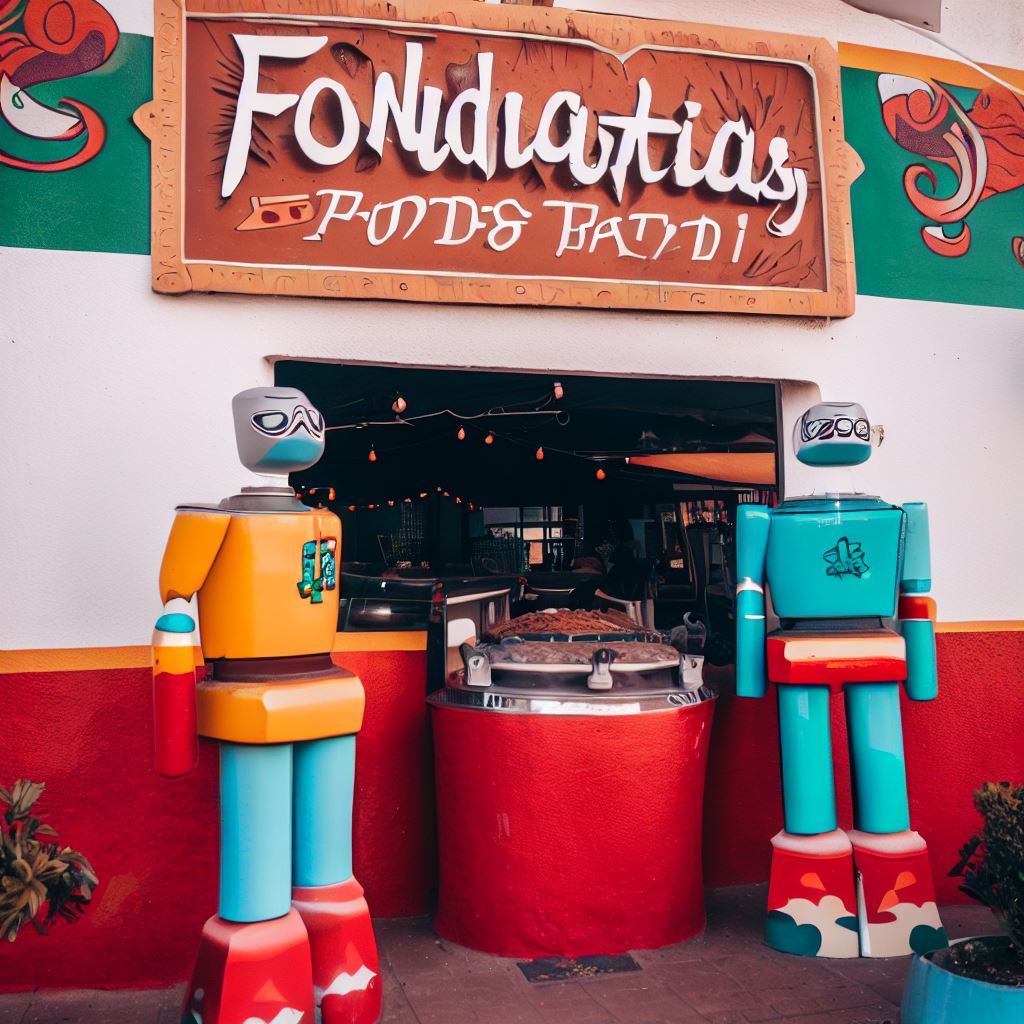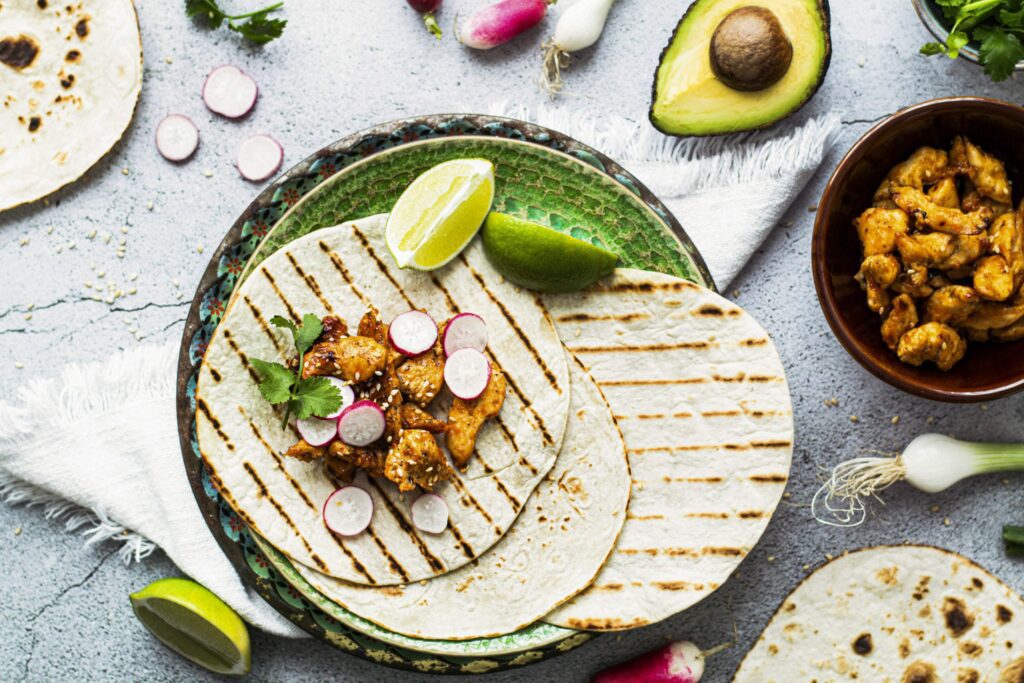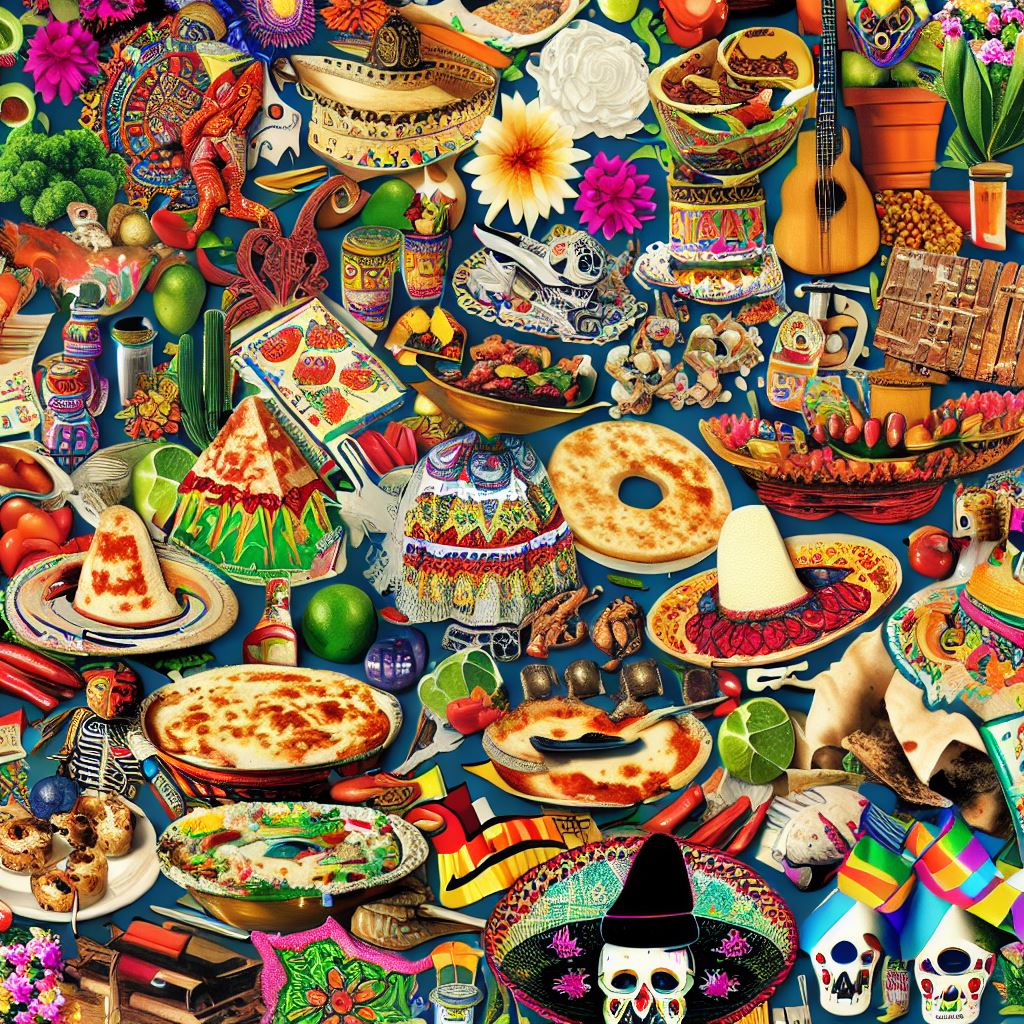The Names Of Mexican Restaurants in Mexico?
Over the years, I have been asked What Are Mexican Restaurants Called in Mexico? ….. Fonda or Fondita is the Spanish translation. I have had the incredible opportunity to embark on numerous culinary adventures and explore the vibrant world of Mexican cuisine. From the bustling streets of Mexico City to the serene coastal towns, each trip has been a delightful journey into the heart and soul of this rich culinary tradition. What fascinated me the most during these experiences was not only the delectable flavors but also the intriguing names of the restaurants, which were often in Spanish.
Thank you for reading this post, don't forget to subscribe!
These names not only added a touch of authenticity to the dining experience but also piqued my curiosity, urging me to delve deeper into the significance behind them. By immersing myself in the local culture and engaging with the warm-hearted locals, I discovered fascinating stories and meanings behind these restaurant names, which added an extra layer of enchantment to my gastronomic explorations.
When embarking on a culinary journey through Mexico, one quickly discovers that the vibrant country is teeming with a diverse array of eateries, each serving delicious, authentic Mexican cuisine. The labels given to these food-serving establishments vary, adding another layer to Mexico’s rich gastronomical tapestry.
What Are Mexican Restaurants Called in Mexico? Fonda and Fonditas
The most prevalent term for a traditional Mexican restaurant in Mexico is “fonda” or its diminutive, “fondita”. These eateries, typically family-run, are informal and cozy, offering a full “comida” – the substantial midday meal enjoyed by locals. Fondas and fonditas are the quintessential go-to places for experiencing home-style Mexican cooking, offering dishes brimming with regional flavors and family recipes passed down through generations.
Fondas usually present a ‘menu del día’, a daily menu, featuring various courses and a drink, allowing patrons to savor different tastes in one sitting. These courses often include soup, rice, a main dish, and dessert, providing a well-rounded view of the local cuisine.
Authentic Eating Experience
While each region in Mexico boasts its culinary specialties, fondas across the country share a common emphasis on serving authentic, freshly-prepared Mexican dishes. It’s here that one can savor the myriad of flavors encapsulated in iconic dishes such as tacos, enchiladas, tamales, and sopes, as well as delve into less-known regional delicacies. Fondas typically steer clear of Tex-Mex influences, focusing instead on traditional Mexican cooking methods and ingredients.
Mexican Cuisine: A Rich Tapestry
Mexican cuisine, a UNESCO Intangible Cultural Heritage, is a fascinating amalgamation of indigenous Mesoamerican and European, notably Spanish, culinary traditions. It involves diverse cooking techniques and a variety of ingredients, with corn, beans, and chili peppers forming the cuisine’s backbone.
Regional variations in Mexican cuisine are vast and deeply-rooted. For instance, Oaxaca, known as the “land of seven moles”, is renowned for its complex, flavorful sauces, while the coastal areas of Mexico offer a bounty of seafood dishes. These regional specialties can often be found within the welcoming confines of local fondas, each dish telling a story of its place of origin.
Notable Mexican Restaurants
While fondas and fonditas provide an intimate and informal dining experience, there are also notable Mexican restaurants that have gained international acclaim. Pujol, located in Mexico City, is perhaps one of the most well-known Mexican restaurants globally, celebrated for its innovative approach to traditional Mexican dishes. Other distinguished establishments like Quintonil and Contramar have also placed Mexican cuisine in the international spotlight, elevating traditional recipes to haute cuisine levels.

What Is Mexican Street Food Called?
Mexican Street Food: A Symphony of Flavor and Tradition
Mexican street food, colloquially known as “antojitos,” translates to “little cravings” and represents a rich tapestry of flavors, a culmination of the varied culinary traditions of the region. Prepared by street vendors and hawked in small traditional markets, antojitos offer a taste of the real Mexico, a delightful journey through its cultural and culinary heritage.
Antojitos: More Than Just a Snack
Antojitos are deeply entrenched in Mexican culture, reflecting the essence of its regional cuisine. They are usually made from corn-based dough and often feature meat, beans, and spicy sauces. These ‘little cravings’ have been satiating hunger and pleasing palates across the country, from bustling urban centers to quiet rural landscapes, becoming a vibrant expression of the nation’s diverse culinary landscape.
Tacos: The QuintessentialStreet Food
When it comes to Mexican street food, tacos undoubtedly top the list. Known globally, this dish is ubiquitous in Mexico, coming in various forms like Tacos al Pastor, featuring succulent shaved meat, or Tacos Dorados, characterized by their crispy shells. Each taco is a canvas painted with succulent meats, fresh herbs, and zestful salsas, creating a flavorful masterpiece.

Tamales: A Bundle of Joy
Tamales hold a special place in the Mexican street food scene, particularly as a breakfast staple. Enveloped in corn husks, these steamed bundles are made from masa (corn dough) and can be filled with meats, cheeses, fruits, and more. With their ancient origins tracing back to the Aztecs, tamales are a delightful link between the culinary past and the present of Mexico.
Elotes and Esquites: Corn in Its Glory
Corn, the foundational element of Mexican cuisine, is celebrated in forms like Elotes and Esquites. Elotes are grilled corn on the cob, smothered in a mix of mayonnaise, cheese, and spices, while Esquites are cups of corn kernels mixed with similar flavorful ingredients. These dishes showcase the versatility and the culturalsignificance of corn in Mexican cuisine.
Molotes, Gorditas, and Tortas
Molote is another delight, often made with stuffed corn dough, deep-fried to golden perfection. Gorditas, translating to “little fat ones,” are pockets of corn dough filled with an array of delicious ingredients. And then there’s Tortas, a Mexican sandwich, generously filled with meats, cheeses, and a variety of fresh condiments, often served in squishy bread.
Savoring Antojitos in the Marketplaces
Antojitos are not only about the flavor, but also about the experience. Savoring these dishes at local markets offers an authentic encounter with Mexican culinary traditions. Each bite tells a story of the land, the people, and their history. The markets are bustling with energy, colors, and aromas, where locals and tourists alike gather to enjoy these flavorful treats and soak in the vibrant atmosphere.
Street Vendors: The Heart of Mexican Street Food
The street vendors are the beating heart of the Mexican street food scene. They carry the legacy of the traditional recipes, passing them down through generations. They are the curators of flavor, molding, andadapting the dishes to the evolving palate of the food lovers, all while maintaining the essence of the timeless recipes.
These vendors are knowledgeable and passionate about their craft, providing insights into the intricate flavors and cooking techniques, guiding the uninitiated through their first bites of a new dish, and ensuring that each meal is a memorable one.
A Celebration of Culture and Tradition
Antojitos are more than just tantalizing treats; they are a celebration of Mexican culture and traditions. Each dish is a gastronomical journey through the diverse regions of Mexico, an exploration of its varied flavor profiles, textures, and cooking techniques. From the crispy Tostadas to the sumptuous Sopes, every dish is a culinary artwork, a flavorful symphony playing the melodies of Mexico’s rich heritage.
Wrap It Up
Mexican street food, with its myriad of flavors and textures, is a gourmet’s delight, a flavor enthusiast’s haven. Antojitos, the ‘little cravings’ of Mexico, represent the soul of the nation’s culinary tradition, offering a colorful palette of delicious dishes, each narrating a tale of heritage, culture, and passion. Whether it’s the universally loved tacos or the delectable tamales, each bite is an invitation to explore and celebrate the vibrant and dynamic spirit of Mexican cuisine.
Street Food: A Culinary Adventure
Beyond the formal and informal dining establishments, the streets of Mexico are alive with food vendors selling “antojitos”, meaning little cravings. Street food is integral to Mexican food culture, with stalls and carts offering everything from tacos and quesadillas to churros and elotes. These readily available snacks are an essential aspect of the Mexican culinary experience, reflecting the country’s culinary diversity and vibrancy.
The popularity of street food in Mexico transcends social and economic boundaries, creating a communal culinary experience. The range of antojitos available is extensive, allowing patrons to savor different regional flavors and textures, making each bite a new adventure.
Tex-Mex vs. Authentic Mexican Cuisine
The concept of Mexican restaurants outside of Mexico, especially in the United States, is often associated with Tex-Mex cuisine. This fusion cuisine combines Mexican and American culinary influences, characterized by the heavy use of shredded cheese, meat, and beans. However, it’s crucial to distinguish between Tex-Mex and authentic Mexican food, as the latter is deeply tied to Mexico’s history, culture, and regional diversity.
Dishes labeled as “Mexican” in many restaurants around the world, such as burrito bowls, are not commonly consumed in Mexico and often represent a modified version of traditional recipes. Authentic Mexican cuisine prioritizes fresh, indigenous ingredients and traditional cooking techniques, with each region contributing its unique flavors and dishes to the national culinary landscape.

A Journey through Flavors
Exploring the myriad of Mexican restaurants, from cozy fonditas to acclaimed establishments, is a journey through flavors, textures, and traditions. Each dish served is a reflection of Mexico’s rich culinary heritage and the diverse influences that have shaped it over centuries.
Whether you find yourself savoring a homemade meal in a local fonda or indulging in a gourmet dish in a renowned restaurant, the essence of Mexican cuisine lies in its ability to tell stories through flavors, inviting everyone to be part of its ongoing culinary narrative.
Conclusion
In Mexico, the term “Mexican restaurant” encompasses a broad spectrum of eateries, from the homely fondas and fonditas to street food vendors and internationally acclaimed establishments. The rich tapestry of Mexican cuisine, characterized by its regional diversity and historical depth, is proudly showcased within these diverse dining venues.
Visiting a fonda in Mexico is not merely about savoring delicious food; it is about experiencing the country’s living culinary heritage, steeped in history and tradition. The gastronomical journey through Mexico offers a deep and enriching insight into the country’s vibrant culture, making every bite a step closer to understanding the heart and soul of Mexico.
